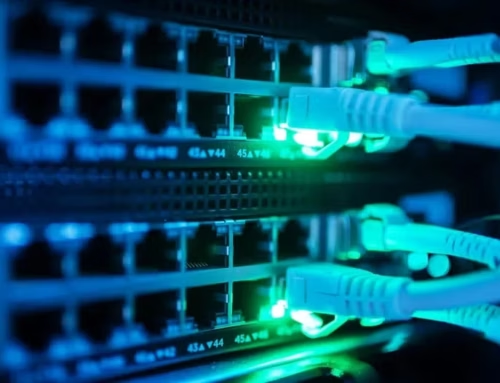
Breaking Down The New U.S Cybersecurity Executive Order.
In an era where cyber threats are becoming increasingly sophisticated, safeguarding national security is paramount. The Biden administration has introduced a new cybersecurity executive order aimed at fortifying the nation’s defenses against cyber threats. This directive seeks to address vulnerabilities across federal systems and critical infrastructure, emphasizing the importance of secure software development practices. With cyber risks on the rise, this executive order represents a crucial step in strengthening cybersecurity standards and promoting innovation to protect our national security systems.
Overview of the Executive Order
The new executive order, formally known as Executive Order 14028, sets a comprehensive framework for enhancing the cybersecurity posture of the United States. It mandates federal agencies to adopt stringent cybersecurity requirements, empowering them to identify and mitigate vulnerabilities in their systems. By focusing on minimum cybersecurity standards and secure software supply chains, the order aims to bolster national cybersecurity efforts. This initiative underscores the administration’s commitment to ensuring that federal contractors and private sector partners adhere to robust cybersecurity practices, thus safeguarding critical infrastructure.
Introduction to Executive Order 14028
Executive Order 14028 marks a transformative shift in the U.S. cybersecurity strategy, prioritizing the protection of digital identity and information systems, especially within federal information systems. The order calls for collaboration between the Cybersecurity and Infrastructure Security Agency (CISA), the National Institute of Standards and Technology (NIST), and other federal agencies to establish comprehensive cybersecurity policies. By leveraging AI software and encryption technologies, the administration seeks to enhance cyber defenses and protect against evolving cyber threats. This order on strengthening the nation’s cybersecurity highlights a proactive approach to mitigating cybersecurity risks.
Key Objectives of the New Cybersecurity Executive Order
The primary objectives of the new cybersecurity executive order include securing the software supply chain and promoting secure software development practices in accordance with the secure software development framework. It aims to enhance the resilience of critical infrastructure by establishing stringent cybersecurity standards and encouraging innovation. The executive order also emphasizes the need for transparency and accountability, requiring federal systems to report cybersecurity incidents promptly. By fostering a robust cyber defense ecosystem, the administration aims to fortify the nation against potential threats and ensure the reliability of its digital infrastructure.
Historical Context: Comparison with the Trump Administration
While the Trump administration also recognized the significance of cybersecurity, Biden’s executive order represents a more comprehensive and coordinated approach. Unlike previous efforts, Executive Order 14028 places a stronger emphasis on collaboration between federal agencies and the private sector, ensuring a unified response to cyber threats. The focus on secure software development and the software supply chain reflects a strategic shift towards preventing vulnerabilities before they can be exploited. This initiative underscores the administration’s dedication to safeguarding the nation’s cybersecurity in an increasingly interconnected digital world.
Strengthening Cybersecurity Policies
Enhanced Cybersecurity Requirements for Federal Contractors
As part of the new cybersecurity executive order, federal contractors are now subject to more stringent cybersecurity requirements to fortify national security. This directive underscores the necessity for federal contractors to implement secure software development practices and actively manage vulnerabilities within their systems as part of the federal acquisition regulation. Federal agencies, alongside the Cybersecurity and Infrastructure Security Agency (CISA) and the National Institute of Standards and Technology (NIST), are tasked with ensuring that contractors adhere to these rigorous standards. By doing so, the administration aims to safeguard critical infrastructure and strengthen the nation’s cybersecurity posture, which is vital for federal information systems.
Vulnerability Management and Incident Response
In tackling cybersecurity risks, the executive order emphasizes a comprehensive approach to vulnerability management and incident response. Federal systems are required to adopt proactive measures to identify potential vulnerabilities and respond swiftly to cyber threats. This includes leveraging advanced technologies such as artificial intelligence (AI) and encryption to enhance detection and mitigation efforts. By prioritizing these strategies, the order on strengthening cybersecurity seeks to minimize the impact of incidents and ensure the resilience of digital identity and information systems across federal networks.
Importance of Cybersecurity in Federal Systems
The significance of cybersecurity within federal systems cannot be overstated, as these systems form the backbone of national security. The executive order highlights the critical role of cybersecurity policies in protecting sensitive information and maintaining the integrity of government operations. By instituting minimum cybersecurity standards, the administration aims to shield federal systems from cyber threats and ensure the continuity of essential services. This initiative reflects a deep commitment to preserving the nation’s cybersecurity and fostering trust in public digital infrastructure, as outlined by the national cyber director.
Supply Chain Security and Software Supply
Addressing Risks in the Software Supply Chain
Addressing risks in the software supply chain is a pivotal component of the federal acquisition regulation. of the new executive order. It calls for a heightened focus on securing the software supply chain to prevent cyber threats that could compromise critical infrastructure. By enforcing robust cybersecurity practices and conducting thorough assessments, the administration seeks to mitigate the risks associated with software vulnerabilities. This proactive approach ensures that software products utilized by federal agencies are secure, thereby fortifying the nation’s defenses against potential cyber incursions.
Promoting Innovation in Cybersecurity Solutions
The executive order also champions the promotion of innovation in cybersecurity solutions to tackle emerging threats. By fostering collaboration between federal agencies and the private sector, the administration aims to spur the development of cutting-edge technologies that enhance cyber defense capabilities. Encouraging innovation is integral to staying ahead of adversaries and ensuring the security of information systems. This initiative not only strengthens the national cybersecurity landscape but also supports the growth of a dynamic cybersecurity industry.
Role of the Private Sector in Cybersecurity
The private sector plays an indispensable role in the nation’s cybersecurity strategy. The executive order recognizes the importance of private sector collaboration in addressing cybersecurity challenges and enhancing the security of critical infrastructure. By partnering with federal agencies, private companies contribute expertise, resources, and innovative solutions that bolster the overall cybersecurity framework. This collaborative effort underscores the shared responsibility of safeguarding digital assets and ensuring a resilient, secure future for all stakeholders involved.
Integration of AI and Encryption in Cybersecurity
Utilizing AI for Cybersecurity Threat Detection
In the ever-evolving landscape of cybersecurity, AI has emerged as a formidable ally in detecting and mitigating cyber threats, particularly in national security systems.. Organizations like TeamWin are at the forefront, offering enterprise AI-driven next-generation firewalls that empower businesses to preemptively identify vulnerabilities across a list of product categories. By leveraging sophisticated algorithms, AI enhances detection capabilities, allowing for real-time threat analysis and rapid response in national security systems. This integration not only fortifies cyber defenses but also provides enterprises with the assurance that their digital infrastructure remains robust and secure against potential incursions.
Importance of Encryption in Securing Data
Encryption stands as a cornerstone in the realm of securing data, acting as a formidable barrier against unauthorized access and cyber threats in federal information systems. In the context of national security, employing encryption technologies ensures that sensitive information is shielded from malicious actors, aligning with the cyber trust mark standards. By converting data into an unreadable format, encryption protects the integrity and confidentiality of information systems. This essential cybersecurity practice addresses both current and emerging threats, reinforcing the resilience of digital identities and safeguarding critical infrastructure from potential breaches.
Future Innovations in Cybersecurity Technologies
As cyber threats become increasingly sophisticated, the innovation within cybersecurity technologies is paramount. Looking forward, advancements in AI, machine learning, and quantum computing are poised to revolutionize the cybersecurity landscape, impacting federal acquisition processes. These technologies will provide more nuanced threat detection and response capabilities, enabling organizations to anticipate and counteract cyber risks proactively. By fostering a culture of innovation and collaboration between federal agencies, private sector partners, and the National Cybersecurity Center of Excellence, the future of cybersecurity will be characterized by enhanced resilience and an unwavering commitment to protecting national security.
Conclusion and Future Directions
Implications for US Cybersecurity Strategy
The new cybersecurity executive order has profound implications for the US cybersecurity strategy, setting a precedent for a more unified and robust approach to national security. By emphasizing the integration of AI and encryption, this directive reinforces the importance of modernizing defenses against evolving cyber threats. The strategic collaboration between federal agencies and the private sector underlines a collective responsibility to fortify the nation’s digital infrastructure, ensuring that the United States remains resilient and secure in the face of an increasingly complex cyber landscape.
Next Steps for Implementation
Implementing the executive order on cybersecurity involves a concerted effort across various stakeholders. Federal contractors must align with the new cybersecurity requirements by adopting secure software development practices and actively managing vulnerabilities. The focus will be on reinforcing the software supply chain to prevent potential breaches. By fostering innovation and collaboration, the administration aims to build a comprehensive cybersecurity framework that empowers organizations to protect their digital assets effectively. This strategic approach underscores the administration’s commitment to safeguarding national security and ensuring the resilience of critical infrastructure.
Monitoring and Evaluating Cybersecurity Effectiveness
Continuous monitoring and evaluation are integral to the effectiveness of any cybersecurity strategy. TeamWin is dedicated to this endeavor, offering 24/7 support and real-time Dark Web monitoring to ensure that enterprises remain vigilant against emerging threats in federal acquisition. By employing advanced analytics and threat intelligence, organizations can anticipate and mitigate cyber risks proactively. This commitment to ongoing assessment not only fortifies defenses but also provides assurance to stakeholders that their digital infrastructure is secure, reliable, and capable of withstanding the dynamic challenges of the cyber realm.
What is the new executive order on strengthening cybersecurity?
The new executive order on strengthening cybersecurity was issued by President Biden in May 2021. It aims to improve the nation’s cybersecurity posture by implementing core cybersecurity measures and promoting innovation in the nation’s cybersecurity framework. This order directs federal agencies to adopt a more proactive approach in securing federal information systems and networks.
How does the executive order improve the nation’s cybersecurity?
The executive order improves the nation’s cybersecurity by mandating federal agencies to implement minimum cybersecurity practices, enhance information sharing, and adopt a security-first mindset. It also emphasizes the importance of integrating cybersecurity into the software supply chain, ensuring that software security is a core focus for all federal systems.
What are the requirements for agencies to support the new cybersecurity executive order?
The requirements for agencies to support the new cybersecurity executive order include adopting specific cybersecurity standards for federal systems, improving incident response capabilities, and increasing collaboration with the private sector. Agencies are also directed to enhance their cybersecurity tools and technologies to better protect against evolving cybersecurity threats.
What is the role of the Office of Management and Budget in the new executive order?
The Office of Management and Budget plays a critical role in the implementation of the new executive order by providing guidance on budgeting for cybersecurity initiatives. It ensures that federal agencies allocate adequate resources to strengthen their cybersecurity measures and supports the overall objectives of the executive order.
How does the order seek to strengthen cybersecurity in the civilian executive branch?
The order seeks to strengthen cybersecurity in the civilian executive branch by establishing a framework for enhancing security protocols and procedures. It requires agencies to prioritize cybersecurity efforts, conduct regular vulnerability assessments, and implement policies that foster a culture of security awareness among employees.
What is the significance of the executive order 14028 in cybersecurity?
Executive order 14028 is significant because it represents a comprehensive approach to addressing cybersecurity challenges at the federal level. It builds upon previous efforts, including Executive Order 13694, and emphasizes the need for resilience against cyber threats, particularly in the software supply chain and critical infrastructure sectors.
How does the executive order address vulnerabilities in the software supply chain?
The executive order addresses vulnerabilities in the software supply chain by requiring federal contractors to adhere to stringent cybersecurity practices. It mandates regular assessments of software supply and integration processes to ensure that security measures are in place to mitigate risks associated with third-party software and services.
What cybersecurity measures are mandated by the executive order?
The executive order mandates a variety of cybersecurity measures, including the adoption of advanced security protocols, enhanced threat detection capabilities, and robust incident response plans. It also emphasizes the need for continuous monitoring and improvement of federal cybersecurity practices to keep pace with evolving threats.
How does the executive order promote innovation in the nation’s cybersecurity?
The executive order promotes innovation in the nation’s cybersecurity by encouraging collaboration between government agencies and the private sector. It seeks to facilitate the development and deployment of new cybersecurity tools and technologies that can better protect federal systems and enhance overall national security.






